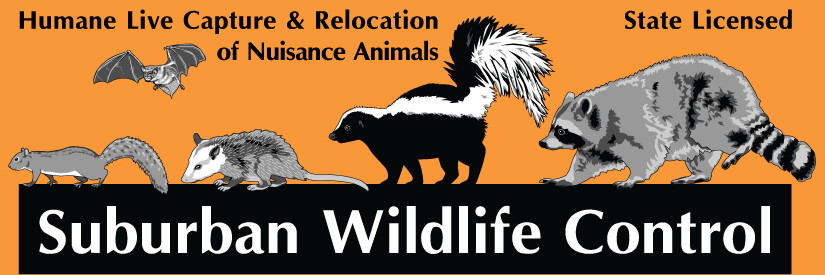Coyotes and Coyote Capture and Removal by Suburban Wildlife Control:
Coyotes are common throughout Illinois. Coyotes occur in nearly all types of habitat, including urban and suburban areas. Their numbers have increased dramatically in recent years. The increase of coyotes has had an impact on other species of wildlife. When we started noticing an increase in the coyote population, we started finding a large number of dead fox, and a noticeable decrease in the number of pheasants. We have even observed a decrease in the local deer population due to coyotes preying upon fawns, and even adult deer. The increase in coyotes is being noticed by many in urban and suburban settings. It is no longer uncommon to see them running right through the middle of town. Coyotes are adapting to these areas and often invade spaces where they are not welcome. They are attacking and killing dogs for territorial reasons, and eating pet cats as prey. These animals are not "bad", they are just behaving as coyotes do, but unfortunately, because of the issue of over-population and the conflict of encroachment in densely human-populated areas, coyote-nature has become problematic. Coyotes have no natural predators, and if they are not controlled the population will continue to increase as well as the problems associated with them. We offer services to trap and remove nuisance coyote. Please contact us for a quote. |
Brad featured in a recent news cast on coyotes: http://www.nctv17.com/napervillenews17/article.php?id=378
View just the article that accompanies the newscast: Coyote Concerns in Naperville
Photos of a Coyote with Mange that Brad successfully trapped being called in by the City of Wheaton. This particular animal was hanging around
in several people's backyards, was unafraid of humans, was spotted outside glass doors trying to go after someone's pet cats, and although
no one knows for sure what became of them, several area pets disappeared in the time frame it was around. See more photos of this animal in
our photo gallery. Mange is a skin disease of mammals caused by a tissue-burrowing arthropod, the mange mite, which tunnels into the skin,
laying it's eggs, and feeding off the host thus causing immense tissue irritation which leads to bacterial and viral infections, loss of fur and hair,
and the eventual slow and agonizing death of the animal. Mange is transferable to pets and other wild animals, but it is uncommon for pets to be
infected by coyotes simply because they do not get close to them, and when they do, they rarely make it home to take it with them.
Mange is widespread in our local coyotes due to overpopulation. It is the number one disease killer of coyotes.
Coyotes are numerous as you can see in our photos, many of which they are walking around in the daytime, when pets are out and vulnerable.





























